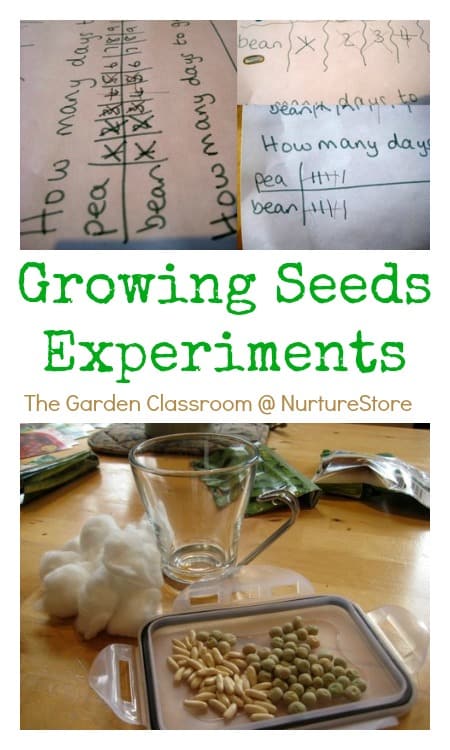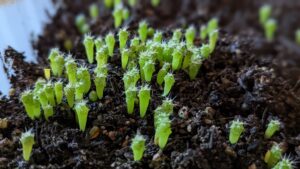Growing seeds on cotton wool is not only an enjoyable endeavor but also an educational one that captivates both young minds and seasoned green thumbs alike. The simple materials required for this experiment highlight the intricate processes of seed germination, making it an excellent choice for both home and classroom environments. This article elaborates on the step-by-step methodology for setting up the experiment, the types of seeds suitable for this activity, and the broader implications of understanding plant growth.
Before launching into the specifics of conducting the experiment, it is essential to grasp the rationale behind using cotton wool as a medium for seed germination. Cotton wool serves as an effective substrate due to its moisture-retaining properties. It allows seeds to absorb vital water and nutrients while simultaneously providing adequate aeration, thus preventing the seeds from becoming waterlogged and promoting healthy root development.
It holds the potential for not only commercial agricultural applications but also for educational purposes, granting a transparent view into the initial stages of plant development. In this section, we delve into the step-by-step approach for executing this experiment, ensuring clarity and ease for participants of varying ages and expertise.
Preparing the Materials for the Experiment
Before you embark on your journey of cultivation, it is imperative to gather all necessary materials. The list is surprisingly short, making this an accessible project for everyone:
- Cotton wool (or cotton balls)
- Shallow tray or dish to hold the cotton wool
- Water (preferably room temperature)
- Seeds suitable for germination, such as beans, peas, or radishes
- Clear plastic wrap (optional)
- Labels for identification
Once you have assembled your materials, you can begin the actual process of growing seeds on cotton wool. Start by lining the bottom of your shallow tray with a layer of cotton wool evenly distributed throughout the surface. You can use either washed cotton pads or loose cotton, depending on your preference. Ensure that the cotton wool is moist but not saturated; excessive water can lead to mold growth, which can be detrimental to germination.
After preparing the cotton wool, position your selected seeds evenly on top. Depending on the type of seed, spacing will vary but generally, allowing a couple of centimeters between each seed will suffice. Optionally, you can cover the seeds lightly with another thin layer of cotton wool to maintain moisture levels.
To create a mini-greenhouse effect, cover the tray with clear plastic wrap, which will create humidity while still allowing light penetration. Place the tray in a location that receives indirect sunlight—too much direct sun can scorch the delicate germinating seedlings. This setup is crucial as it simulates the natural conditions that seeds experience in soil, fostering successful germination.
The Waiting Game: Observing Growth
Once the seeds are sown and the environment is set, the next phase involves patience and observation. Germination may take anywhere from a few days to a couple of weeks, depending on the variety of seeds used. As days pass, students and participants can observe the changes taking place. Encourage them to keep a journal to document growth progress and any notable changes they witness. Each radical might appear, indicating the onset of root growth, while cotyledons will break through the cotton wool, revealing the emerging seedlings.
This observational period serves not only as an interactive learning experience but also as a way to instill values such as patience and responsibility. Water the cotton wool as necessary, ensuring it remains damp, but careful not to drown the young plants. This concept also underscores the delicate balance required in plant care, a significant lesson for budding horticulturists.
Seeds Suitable for Cotton Wool Germination
While you can experiment with various seeds, not all are equally suited for germination on cotton wool. Some of the best candidates include:
- Bean seeds (e.g., kidney beans, pinto beans)
- Pea seeds
- Radish seeds
- Cress seeds
- Sunflower seeds
- Squash seeds
These seeds not only germinate well but also exhibit quick growth, allowing participants to witness the results of their efforts within a reasonable timeframe. Additionally, watching how different seeds behave allows for discussions about the diversity found in the plant kingdom and the variations in their growth cycles.
The Broader Implications of Growing Seeds on Cotton Wool
Engaging in seed germination experiments fosters an appreciation for the intricacies present in nature—an understanding that reinforces topics such as biology, ecology, and environmental science. As participants explore the growth process, they can delve into discussions about the role of plants in ecosystems, their importance to the food chain, and the environmental factors influencing plant growth.
Beyond educational benefits, these exercises offer an opportunity to emphasize sustainable practices and the significance of nurturing the environment. Understanding where food comes from inspires conversations about urban gardening, farmers’ markets, and the importance of biodiversity. Furthermore, the experiment can ignite a deeper interest in botany and agriculture, possibly leading to future careers in environmental science, horticulture, or conservation.
In summation, growing seeds on cotton wool serves as a captivating and enlightening scientific experiment. It encourages active participation, deeper knowledge, and insight into the world of plants, making it a superior activity for any inquisitive mind. Engaging with seeds not only provides hands-on experience but also emphasizes the importance of growth, resilience, and the gravitas of our ecological responsibilities. Take the time to embark on this germination journey; you may just cultivate a lifelong love for plants along the way.





Leave a Comment